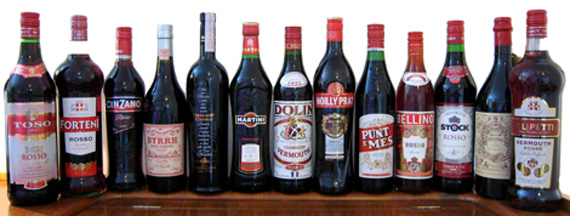Vermouth has always had a special place in our liquor cabinet: in the back, behind the bottle of gin we reserve for when our grandmother comes over and wants her nightly martini. So when we heard vermouth was making its way into the bar scene, we had to look a little closer.
What is Vermouth? How is it made? How do you drink it? We know its been awhile since Vermouth has been in the limelight, so here is our crash course on Vermouth 101:
The Basics:
“Vermouth” comes from the German word for wormwood, which used to always be the main ingredient in the liquor. Wormwood is an extremely bitter ingredient, which gives it a distinct taste. A long time before we were born, it is said that Hippocrates used Vermouth as healing medicine (we see where he’s coming from).
Vermouth is now used as an aperitif, which means that it’s served before dinner in order to stimulate the appetite. Like a true aperitif, Vermouth has a vibrant smell, color and flavor. Traditionally, Italian Vermouths were known for being red and sweet, while French Vermouths were known for being white and dry, but these lines have blurred in recent years.
The History:
Typically, the base ingredient for Vermouth is a neutral, low-alcohol white wine, which is fortified with a spirit (brandy, for example). The wine is placed in barrels with dry ingredients (like wormwood, cinnamon, juniper, ginger, etc.) and stirred until everything is absorbed.
Most people will tell you that Vermouth is used as a mixer for Martini’s, Manhattans, Negronis and other drinks that are currently making a post-Prohibition comeback. While this used to be the case with big brands like Martini & Rossi, Carpano, Cinzano, and Noilly, the recent rise in American craft Vermouth makers has turned Vermouth into more of a sipping drink.
The Revolution:
American Vermouth makers have been pushing the limits. For European manufacturers, the use of wormwood is required, but American companies have more freedom, and they have definitely been using it. “New World Vermouth,” as it has come to be known, uses a higher quality base wine, and different dry ingredients that are generally less bitter than wormwood. This allows for a taste that is a mix of both bitter and sweet.
But don’t worry Martini & Rossi, there is still room for you. While American Vermouths are great on the rocks or with splash of club soda, they may not be the best mixer, and Grandma still needs her Martini.
What is your experience with Vermouth? Leave us a comment below.


